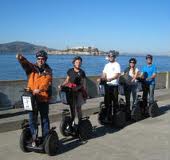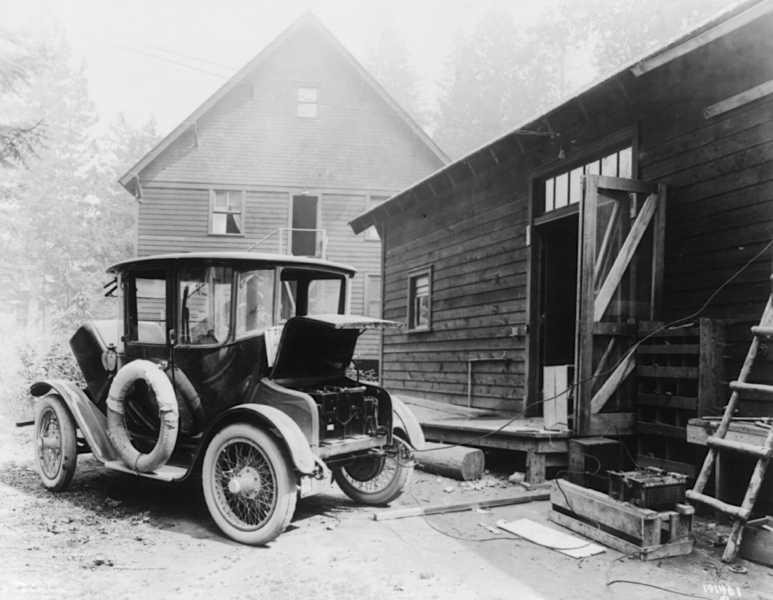Brian Whitworth and Adnan Ahmad contributed a chapter on Socio-Technical System Design for the free Interaction-Design textbook. This is a very interesting, if technical discussion of the subject. While reading it, I kept thinking about how I would love to debate some of the points raised in this Chapter in person. But lacking this opportunity, below are my ideas and thoughts on the subject of Socio-Technical System Design.
First, let me give a quick summary of what is a socio-technological system paraphrasing a bit from Whitworth and Ahmad own words:
Socio-technology is about technology and people. Technology is any device. IT system is then a combination of software AND device(s). Human computer interaction (HCI) is a person plus an IT system. Introduction of “person” brings physical, informational and psychological levels into the combined system. And finally, socio-technical system (STS) is merger of community and HCI(s).
A Bit of Historical Perspective
When my son was in third grade, he was given an assignment: compare some technology from today with that of 100 years ago. He chose transportation. Here’s his insight:
100 years ago, going from San Francisco to Berkeley took a very long time. There were no bridges. People had to drive their horse wagons around the San Francisco Bay or take a ferry. It took days! Now, we just get in a car, and we can get from our house to Berkeley in one hour. We don’t think that the distance between Berkeley and San Francisco is very far. But back then, it was a very big deal.
Today, we drive to our supermarket. It is only a few miles from our home, but we think it is too far to walk. 100 years ago, people walked miles each day and didn’t think it was very far at all.
How we think about distance today and 100 years go changed.
I think this was a very profound insight. Transportation technologies changed how we feel about distances! It changed how we feel about time and our attitudes towards scheduling of tasks. In this very strange way, it inverted our perception of distance: close destination seem far, while far away places seem close.
Transportation is a Socio-Technical System. It is a tight integration of technology, environmental conditions, social needs, personal preferences, government regulations, supply chains, software, etc. It’s not enough to invent a car, the society needs a system of roads, refill station, road rules, traffic police, maps, road maintenance crews… An enormous amount of infrastructure needs to be developed in order to make cars a desirable alternative to other transportation solutions.
There’s a good reason that Segways didn’t take off as predicted — we didn’t have a social and structural system that could easily accommodate this new device, no matter how cool it was. In San Francisco, Segways are banned on the sidewalks, but they are too dangerous to drive on the roads. There’s no way to store them once the owner reaches his/her destination — it’s an attractive object to steal and no way to secure. It’s not a good alternative in bad weather. And it is too costly to own for the simple pleasure of owning a neat device. It’s not practical even for short distances — a trip to a supermarket is pointless without a trunk to store the groceries. And it is impossible to use Segways to take the kids to school. So in San Francisco (and in Rome and other cities around the globe), Segways are relegated to tourist groups, moving at slow speeds in parks.

Segway failed to solve the socio part of the Socio-Technical System Design equation.
When Dr. Whitworth and Dr. Ahmad discuss how to design socio-technical systems, they seemed too focused on computers and computer networks. That’s just one system. All systems have a history. We have to look broader at how socio-technical systems evolved over our history. And we have to look from the human side of the equation.
Wider Perspective
 As with transportation, social goals, needs, and interaction with technology evolve over time. And it’s not just the technology that drives this evolution. It took decades for electricity to “take”. It’s good technology, but the social component took time to reach wide enough acceptance to develop supporting technologies (e.g. incandescent light bulb, invented in 1870s), electrical power delivery, payment systems for services, and so on. Our need to communicate was a lot stronger than our need for electrical light — intercontinental and transatlantic telegraph systems came online in the 1860s! (Wikipedia: http://en.wikipedia.org/wiki/Electricity).
As with transportation, social goals, needs, and interaction with technology evolve over time. And it’s not just the technology that drives this evolution. It took decades for electricity to “take”. It’s good technology, but the social component took time to reach wide enough acceptance to develop supporting technologies (e.g. incandescent light bulb, invented in 1870s), electrical power delivery, payment systems for services, and so on. Our need to communicate was a lot stronger than our need for electrical light — intercontinental and transatlantic telegraph systems came online in the 1860s! (Wikipedia: http://en.wikipedia.org/wiki/Electricity).
Interestingly enough, electric car was invented before the internal combustion engine. New York City had a fleet of electric taxis in 1897! But then, as now, there were problems with creating rechargeable batteries that lasted just the right amount of time and distance to make them desirable in the long term. Combustion engine won because it was able to solve that social need first and did so at a lower cost (or so we thought). Below is a photo of an electric car charging in Detroit:

Both, electricity and transportation, advances changed our society. Light allowed us to work and study longer and at times that were more convenient to us, ultimately increasing our productivity. And evolution in transportation gave us options on where we could live and work and how we could distribute our resources (e.g. food, raw materials, manufactured goods).
There’s a strong movement to get electricity to rural Africa to advance economic potential of those populations. Working late after sunset, allows individuals to supplement their incomes. And, as an unexpected benefit, electrical lights promote social bonding within a community: “Socio-economic and Socio-cultural Impact of Rural Electrification in Four Districts of the Kingdom,” Andreas J. Obrecht.
Transportation changed how we perceive distances, and probably lead to a negative impact on social bonds within a community and family. We no longer expect our children to necessarily live in the same region as we do. Large physical separations cause problems in child-raring and support, elderly assistance, and emotional bond. While we might think otherwise, strong emotional bonds require frequent physical contact. This is hard to achieve over Skype or Facebook, over several time zones, and over distances requiring jet propulsion to overcome.
Just as electricity and transportation, ICT (Information Communication Technology) is changing over time and is depended on the social structure in which it is embedded. When we talk about designing socio-technical systems, we have to think about who uses them, for what purpose and goal, under which circumstances, and to what effect.
Let me offer another interesting example. A few years ago, at an IADIS conference, a couple of Indian presenters described a government project designed to help rural villages with farming needs (e.g. weather information, market price data, crops support). To provide computer help, the Indian government sent out a “man with a computer” out to a village. He set up shop for a week or so and used the Internet to answer questions, give weather forecasts, share information on market prices for crops in the area, and trade gossip. After a few days at one village, the man would pack up and move to the next, providing the same service down the road.
In a country where every 50 miles there’s a new language, and the literacy rates among the rural population are low, a “man with a computer” was a great socio-technical solution. This man was an interpreter, and technical support, and teacher, and newsman, and entertainment all rolled into one exciting package. Indian government could have set up “one computer per village” solution, but it would have failed without continuous support (both technical and social).
While this was not discussed at the conference, I’m sure that there were unexpected consequences of “man with a computer” project. For example, parents would have felt better sending their children to villages farther away, knowing there was a connection. Local kids got exposure to technology. And to different degrees, people at the participating villages developed computer literacy — while they might not have learned to “drive” the computer, they would have developed a sense of what was possible. This ability to visualize the possibilities is just as important as other other types of literacies. In engineer’s speak: “I know the solution exists, even if I personally don’t know it.”
Technology changes how we relate to friends, family, and community. And while computers facilitate some of these changes, they are not the only driving force behind them. For socio-technical systems the evolution is a two way street.
[G]ood design is generally a combination of different qualities — what it does, what it looks like, and so on. But as our expectations of design change, so do those qualities and the relationship between them. (New York Time: “What is Good Design?”)
Taking On Some Ideas in the Chapter
Having given some background, I would like to take on some of the ideas in the Whitworth and Ahmad chapter directly. I should reiterate that while I pick on individual points, I find the Chapter interesting and useful. In particular, I like the tools that Whitworth and Ahmad developed to help developers and programmers describe the socio-technical systems more precisely. In the world of programming, if the designers of the system don’t specify the functionality, the programmers have to guess at the designers’ intention and develop the functionality without the blueprint. This always leads to problems, as the expectations on all sides — investors, designers, programmers, users — are not met.
Whitworth and Ahmad write:
Computing can’t implement what it can’t specify.
Whitworth and Ahmad write:
…sociologists see social systems, psychologists cognitive systems, computer scientists information systems and engineers hardware systems…
I think this is too simplistic. Product designers take ALL of these systems into account and more. Products are designed to accommodate business needs, goals, and constraints. Designers have to understand the target audience and the environmental conditions of use (strengths and limitations of both). Designers have to know historical and cultural context in which their products will be utilized. They have to know how the product will be marketed and sold. They have to understand the error tolerance and the consequences of failure. Good designers have to work within what’s “doable”. Given such an enormous cognitive and informational load, good designers tend to work in teams.
People who design products see it all those systems as one!
Mechanical, logical, psychological and social systems are studied by engineers, computer scientists, psychologists and sociologists respectively.
Again, I think schools teaching product design require their students to have working knowledge of mechanical, logical, psychological, and social systems. We no longer teach these subjects in isolation from each other.
Whitworth and Ahmad describe spam as the scourge of Internet communication. But we had spam way before we had email: our USPS regularly delivers endless stack of never-asked-for materials — paper spam! Prior to that, we had town criers making announcements to the citizens of the town. Some of those announcements were relevant to all individuals, some not — audio spam! Same goes for church bells and calls to prayer. There are hundreds of posters and billboards all around us, most with little business to us personally — visual spam! Television commercials — video spam! Neon lights — light spam! As long as there were people, they were using what ever communication tools they had at their disposal to deliver spam to each other. It’s nothing new. We argue that the Internet magnified the scope of spam, but if taken together, all other forms of informational noise is just as significant in wasting our natural resources and attention. Spam works not because socio-technical systems are not well-designed, but because enough people react (e.g. click, call, write, respond, etc.) to make it worth the spammers’ while. Without incentives, the spam would cease.
Whitworth and Ahmad write about the disadvantages of nepotism — how hiring friends and relatives corrupts an online social system. But nepotism have always been around (God has a girl…). Nepotism is just a shortcut to trust. And in an online community with thousands and thousands of members, degree of familiarity is just another measure or variable to apply to information. The value of information have always depended on who delivered it.
As I was reading “Part 4: An example: Online rights”, I couldn’t help but continuously come up with counter examples. Whitworth and Ahmad developed an interesting system of rules and ways of expressing relationships in a complex online social environment, but not all socio-technical systems fit their mold. Consider the rise of the shared car system. Here’s an interesting socio-technical design solution to real world problem: too many cars, used too infrequently and which are too expensive to own individually. Owning a car is expensive proposition (and not just the initial cost investment). Between insurance, registration, taxes, parking fees, traffic tickets, toll-roads, maintenance, and other fees, one car to one individual is not a good solution. There’s a rise in shared car services. Some work as co-ops — several people jointly own one car and figure out ways of sharing equitably. But most work by creating a membership in a car service — people pay for membership which gives driving privileges when and where they need them for a fee. Software allows ways of tracking use and car location, deals with payment system, calculates the optimum number of cars needed to maintain the service.
Car sharing systems are socio-technical systems, but they don’t fit the Whitworth and Ahmad model. There’s no “creation” of objects by individuals, there’s no community in a way that Whitworth and Ahmad envision a community.
But the system seems to break down even for cases that seem to fit directly the model that Whitworth and Ahmad are developing. We live in the first generation where parents create their children’s social online accounts from birth. They put photos and anecdotes online and by the time the kids are old enough to take over the account, they already have an extensive online presence. What are the rights of those kids? What do they own? Whose identity is this? What if parents lie? What if parents don’t surrender the kids’ identity to them when they come of age?
The problem with specifying systems in isolation from real-world use is that they break down when presented with details of the real problem. System specs are too abstract to help product designers do their jobs well. If car sharing system designers started with the “Online rights” model, we would have had a very different system. Starting with user goals and needs and the constraints presented by laws, budgets, and social norms around car ownership allowed for more fluid and “think outside the box” solutions.
As I was reading the chapter, I kept remembering back to the days I took linguistics in college. Linguistics gave a wonderful mathematical system of thinking about human languages. It was great to look at all the languages as a set at the same time. I loved it. But presented with a specific example of a particular language, the linguistical representation bogged down in exceptions to the rules. It was still useful to glean some overall general trends, but it wasn’t good if you wanted to write an essay…
Computers are electronic savants, calculation wizards that need minders to survive in the real world.
I think this is absolutely true…now. But how will it be in 50? 100? 500 years? My son fully expects to move his consciousness into socio-technical system in his lifetime. Does this mean there will be two or more of him?
I like having tools to help me think through difficult design problems. But I worry when tools become too abstract or mathematical in the design phase of the problem. I want to think about ways that technology is not being used — the cracks in the current systems that can become seeds of something else. By specifying too early, I worry about reducing my options, limiting my design potential. With any problem, I need to see a path to success and then I will use tools to specify this path.
Bibliography
Obrecht, A., J. (2011). “Socio-economic and Socio-cultural Impact of Rural Electrification in Four Districts of the Kingdom.” Visited on June 13, 2012: http://www.kef-online.at/de/download/socio-economic-and-socio-cultural-impact-of-rural-electrification-in-four-districts-of-the-kingdom.html
Stross, E., (2012). “Lending Your Car to Strangers (for Cash).” New York Times. Visited on June 13, 2012: http://www.nytimes.com/2012/02/19/technology/car-sharing-companies-link-owners-with-renters.html
Rawsthorn, A. (2008). “What is good design?” New York Times. Visited on June 13, 2012: http://www.nytimes.com/2008/06/09/arts/09iht-design9.1.13525567.html
Stevenson, J. (2012). “Humanisation of computing: A Copernican moment for tech.” BBC News. Visited on June 13, 2012: http://www.bbc.co.uk/news/business-17858069
…And One More Thing…
This is a lecture by James Gleick, given at the Santa Fe Institute on May 16th, 2012: “How We Came To Be Deluged By Tweets.”

2 comments for “Special Preview: Socio-Technical System Design”